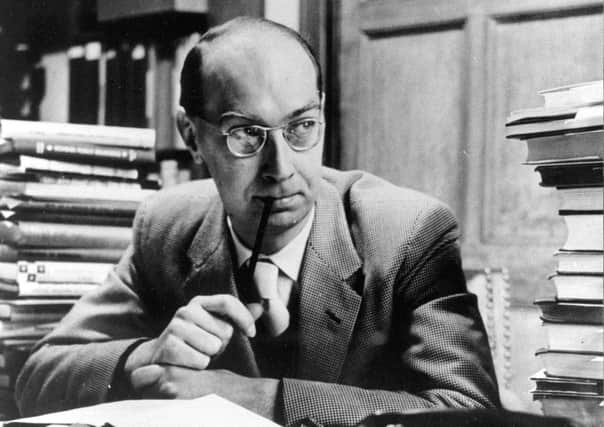In the realm of English literature, Philip Larkin stands tall as a poet who masterfully delves into the intricacies of human existence. His poem “Mr Bleaney” is a haunting portrayal of loneliness, mundanity, and the existential angst that pervades modern life. In this Mr Bleaney critical analysis, we will dissect Larkin’s work, unraveling its layers to understand the profound messages hidden within.
Understanding Mr Bleaney: A Closer Look
At first glance, “Mr Bleaney” appears deceptively simple, recounting the mundane existence of a man who inhabited a rented room before the speaker moved in. However, beneath its straightforward narrative lies a rich tapestry of themes and emotions waiting to be explored.
Loneliness and Isolation
One of the central themes of the poem is the pervasive sense of loneliness and isolation experienced by both Mr Bleaney and the speaker. Through sparse yet evocative language, Larkin paints a bleak picture of solitary existence, as evidenced by lines such as:
“…he stayed The whole time he was at the Bodies, till They moved him.”
These lines not only underscore Mr Bleaney’s solitary nature but also hint at the transient and impermanent nature of human life.
Mundanity and Despair
Larkin’s portrayal of Mr Bleaney’s living conditions serves as a commentary on the banality and despair that often accompany modern life. The room, described in stark detail, becomes a symbol of the monotonous existence endured by its occupant:
“…savage faced The lodge-keeper.”
Here, Larkin juxtaposes the harsh realities of daily life with the sterile and impersonal environment of Mr Bleaney’s room, highlighting the soul-crushing effect of societal norms and expectations.
Existential Angst
Beneath the surface of Mr Bleaney’s mundane existence lies a deeper sense of existential angst and disillusionment. The speaker’s musings on the transient nature of life and the inevitability of death underscore the underlying sense of futility that permeates the poem:
“…I know his habits – What time he came down, his preference for sauce And workmen’s not: the room.”
These lines reflect the speaker’s futile attempts to grasp the essence of Mr Bleaney’s existence, ultimately leading to a profound sense of existential despair.
Comparing “Mr Bleaney” with Other Works
To gain further insight into Larkin’s poem, it is instructive to compare it with other literary works that explore similar themes. One such work is Larkin’s own poem “Church Going,” which offers a meditation on the decline of religious faith in the modern world.
In “A Critical Analysis of Philip Larkin’s Poem ‘Church Going'”, we delve into the themes of spirituality, mortality, and the search for meaning in Larkin’s work, drawing parallels between “Church Going” and “Mr Bleaney” to uncover the poet’s overarching worldview.
The Dangers of Technological Overload
In today’s digital age, where technology permeates every aspect of our lives, it is crucial to reflect on the consequences of overdependence on digital devices. “Tech Overload: The Risks of Overdependence on Technology” explores the impact of technology on mental health, social relationships, and overall well-being, shedding light on the need for balance and moderation in our digital consumption habits.
Exploring Further Interpretations
Beyond the themes of loneliness, mundanity, and existential angst, “Mr Bleaney” invites readers to explore various interpretations and analyses. Scholars and critics have offered diverse perspectives on Larkin’s poem, enriching our understanding of its nuances and complexities.
Socioeconomic Commentary
Some interpretations of “Mr Bleaney” delve into its socioeconomic implications, viewing Mr Bleaney as a symbol of the working-class struggle in post-war Britain. The cramped living conditions and monotonous routine depicted in the poem reflect the harsh realities faced by many during this period of social upheaval and economic uncertainty.
Psychological Depth
Psychological analyses of “Mr Bleaney” focus on the inner workings of the human mind, exploring themes of alienation, repression, and existential dread. Mr Bleaney’s stoic acceptance of his dreary existence can be interpreted as a coping mechanism, a defense mechanism against the overwhelming despair of modern life.
Symbolism and Imagery
Larkin’s use of symbolism and imagery in “Mr Bleaney” adds depth and complexity to the poem, inviting readers to uncover hidden meanings and connections. The room itself becomes a symbol of confinement and entrapment, while the absent presence of Mr Bleaney haunts the speaker, serving as a reminder of the fragility of human existence.
Applying Critical Analysis Techniques
To conduct a comprehensive critical analysis of “Mr Bleaney,” it is essential to employ various literary techniques and approaches. Close reading, for example, allows readers to examine the text line by line, uncovering subtle nuances and implications that may not be immediately apparent.
Additionally, historical and biographical contexts can shed light on the broader significance of Larkin’s work, providing insight into the socio-cultural milieu in which the poem was written.
Practical Applications
Beyond its literary merit, “Mr Bleaney” offers practical applications for readers and scholars alike. Teachers may incorporate the poem into their curriculum to stimulate discussions on themes such as loneliness, alienation, and the human condition. Likewise, students of literature can use “Mr Bleaney” as a case study for exploring different critical approaches and analytical techniques.
Conclusion
In conclusion, “Mr Bleaney” by Philip Larkin is a rich and multi-layered poem that rewards careful analysis and interpretation. Through its exploration of themes such as loneliness, mundanity, and existential angst, the poem invites readers to contemplate the complexities of the human experience. By applying critical analysis techniques and exploring various interpretations, we gain a deeper appreciation for Larkin’s poetic vision and the enduring relevance of his work in today’s society.
So, whether you’re a seasoned scholar or a curious reader, take the time to immerse yourself in the world of “Mr Bleaney” and discover the profound insights it has to offer.

